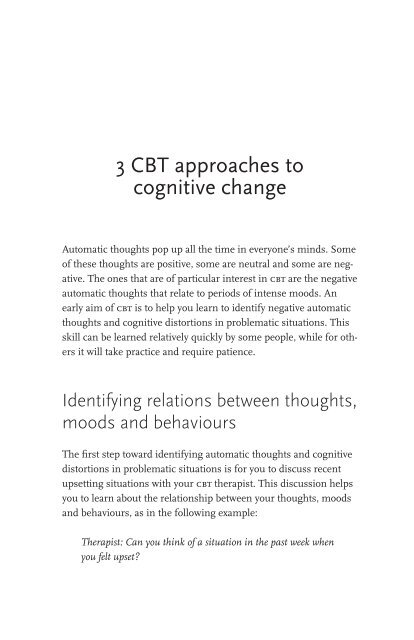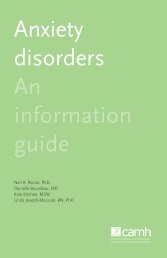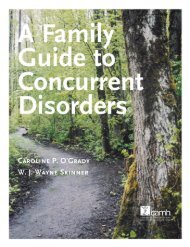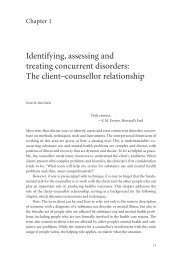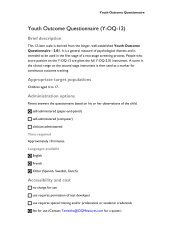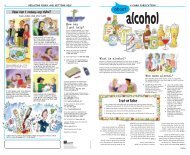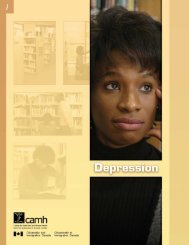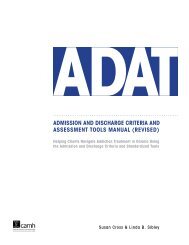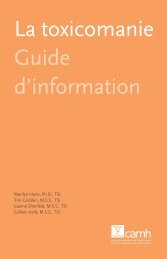Cognitive-behavioural therapy: An information guide - CAMH ...
Cognitive-behavioural therapy: An information guide - CAMH ...
Cognitive-behavioural therapy: An information guide - CAMH ...
Create successful ePaper yourself
Turn your PDF publications into a flip-book with our unique Google optimized e-Paper software.
14<br />
3 CBT approaches to<br />
cognitive change<br />
Automatic thoughts pop up all the time in everyone’s minds. Some<br />
of these thoughts are positive, some are neutral and some are negative.<br />
The ones that are of particular interest in cbt are the negative<br />
automatic thoughts that relate to periods of intense moods. <strong>An</strong><br />
early aim of cbt is to help you learn to identify negative automatic<br />
thoughts and cognitive distortions in problematic situations. This<br />
skill can be learned relatively quickly by some people, while for others<br />
it will take practice and require patience.<br />
Identifying relations between thoughts,<br />
moods and behaviours<br />
The first step toward identifying automatic thoughts and cognitive<br />
distortions in problematic situations is for you to discuss recent<br />
upsetting situations with your cbt therapist. This discussion helps<br />
you to learn about the relationship between your thoughts, moods<br />
and behaviours, as in the following example:<br />
Therapist: Can you think of a situation in the past week when<br />
you felt upset?


